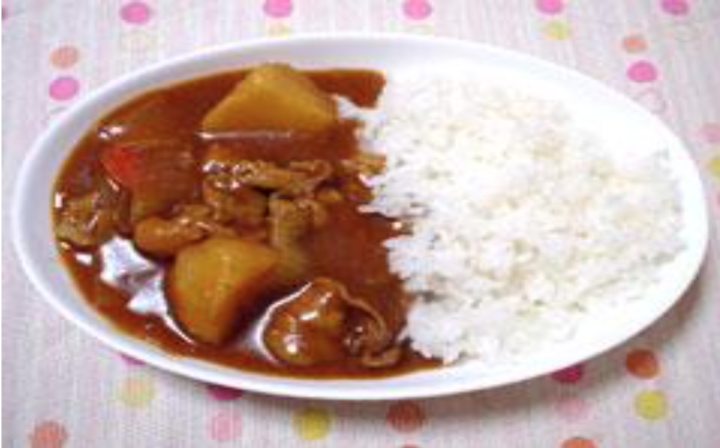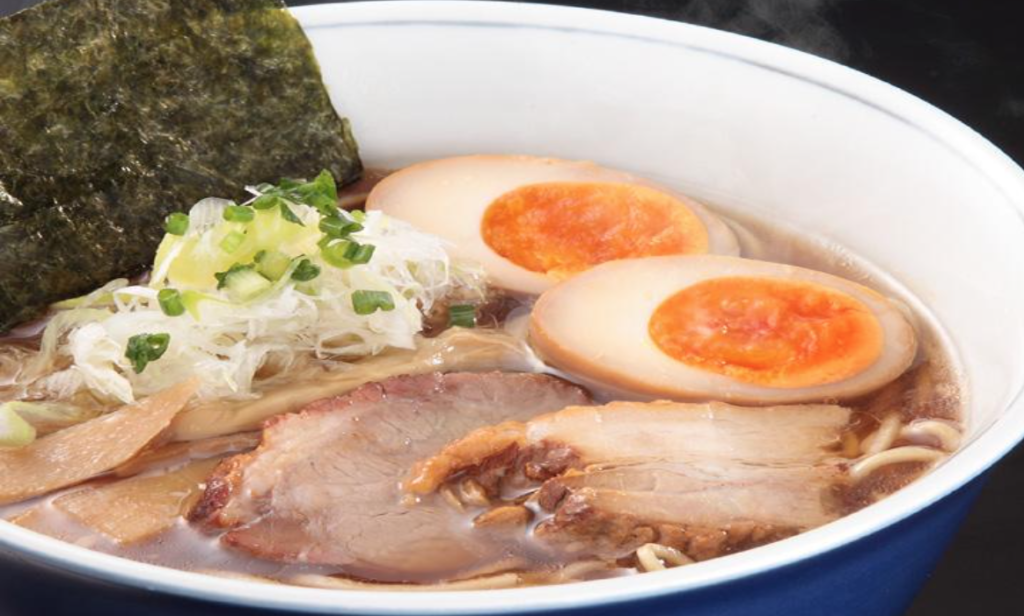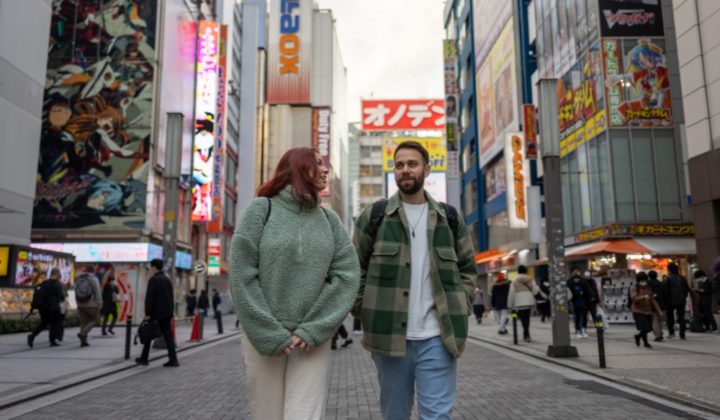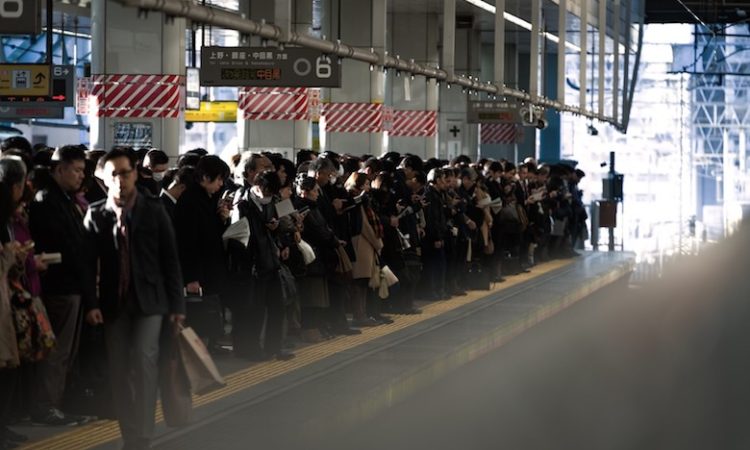What comes to your mind when thinking about fast food? For sure Mcdonalds hamburgers are eaten all over the world, but did you know that Japan as a country famous for the ‘convenience culture’ also thrives on its own ‘fast food collection’? Let’s check out what types of Japanese fast food are available on market!
Japanese fast food can be categorized mainly into two kinds. One is the main dish served on rice, called “Donburi”, examples are “Gyudon” and “Katsudon”, or even “Curry Rice”, which is a bowl of rice topped with curry sauce served on a flat dish and normally called “Curry and Rice” in the western countries. The other is noodle dishes that are popular among all generations, from kids to elderly, almost every Japanese loves eating “Ramen”, “Udon”, and “Soba”.
In the following article, we are going to introduce 6 specific Japanese fast food that are delicious and can be found almost everywhere within the country, so, next time when you have no idea about what to eat for lunch, go to the nearest restaurant/cafe and taste our recommendations!
1.Gyudon (Donburi-1)
Gyu-don’s, “Gyu” stands for beef, and “Don” stands for the rice on the bowl. Gyudon is a Bowl of rice topped with beef and onion simmered in sugar & soy sauce and sweet Japanese Sake flavored with fish and seaweed stock. When you don’t have enough time for lunch, you can order soon, and can get the food in 3-5 minutes and start feasting.
1) Gyudon’s History:
In Japan, the custom to eat beef has started since the Meiji era with the Westernization of Japan. One of the most largest “Gyudon” restaurant chains, Yoshino-ya started to serve it in 1899 in Tokyo as a small restaurant, but Yoshino-ya has over 1,000 Gyudon shops in Japan now. Other two chains named “Sukiya”, and “Matsuya” also have around or over 1,000 shops in Japan and overseas.
2) How to Order Gyudon:
You can choose the size of rice and ingredients when you order. If you want to order a standard size, you can say “Futsu-Mori” , “Futsu” stands for “standard ”, “Mori” is a kind of numeral, which stands for the volume of the rice usually. But you do not have to worry about so much. If you just say, “Gyudon”, the standard size will be served to you.
If you are very hungry and you want to eat a lot of rice, you should say “Gyudon, Oh-mori”, “Gyudon, Dai”, or “Gyudon, Rice, bigger”. “Oh”(大) or “Dai”(大) in Japanese means bigger or larger.
If you want to eat standard rice with additional meat, you should say “Niku Oh-mori”. “Niku”(肉) stands for meat in Japanese.
If you want to eat smaller one, you can say “smaller one”, as all Japanese would understand easy English words such as “big” and “small”.
3)You Can Add Spice or Red Ginger
If you want to eat spicy one, you can add “Red Pepper”on the “Gyudon”, which are put on the table. If you want to eat a Gyudon with more Japanese taste, you can add “Red ginger” to it, just as balck pepper and salt are commonly available on the table of Pizza shops, red pepper and red gingers are offered in Gyudon restaurants/shops.
2. Katsudon (Donburi-2)
Katsudon is also a very popular bowl rice menu in Japan as well as ”Gyu-don” or “Ten-don”, Katsudon is a bowl rice dish topped with a deep-fried pork cuttlet, eggs, and vegitables.
1)Various Kinds of Meats
If Japanese people say “Katsu”, it would generally mean a deep-fried pork cutlet. “Ton-Katsu” to specify the meat, as Japanese also eat deep-fried chicken cutlet, as well as a beef cutlet. A deep-fried cutlet chicken is called “Chicken Katsu” in Japanese and the beef version would be “Beef Katsu” with Japanese-style English pronunciation. So, you could order a dish by simply saying “Katsudon”, “Chicken Katsudon” or “Beef Katsudon”.
2) Various Kinds of Topping Sauce
A lot of Katsudon restaurants/shops prepare a variety of sauces for the cutllet, eggs and onions. You can choose the Katsudon with demi-glace sauce and cabbages instead of onion, or one with Miso sauce without onion. Some Local places might even offer their home-made versions.
3) Another Meaning of “Katsu”
In Japanese, “Katsu” means the same time “Win”, so, some students will eat “Katsudon” on the day before the college entrance exams; some gamblers might eat “Katsudon” before games for good luck.
3. Curry Rice:
1) Japanese Style Curry Rice:
Curry Rice was introduced to Japan during the Meiji era(1868-1912)by the British. The formal name of the dish in English is “Curry & Rice”. As everybody knows, the curry itself is the food originated in India. In Japan, curry rice is not only eaten as fast food at shops, many people enjoy cooking it at home, you might get surprised how many curry powder ads are running on TV, it is served as lunch at elementary schools or junior high schools as well.
The most common sauce includes the vegetables such as onions, carrots, and potatos and beef, but chicken, and pork also matches well with the curry, sometimes, fish or sea foods are used, too.
2) How to Order at a Curry Shop
When you eat curry rice at a curry shop, you need to choose the following;
・ Which base taste do you want, beef curry or pork curry ?
・How much rice do you want?
Standard rice gram is 200-300 gram, you can add rice as you like or order smaller amount as well, in case you do not want to eat much.
・Spice on your curry rice ? If yes, how much?
・Any topping on your curry rice?
There are a lot of options, such as a half boiled egg, deep fired pork or chicken cutlett and vegetables of the season, which are often shown as pictures on the menu.
4.Ramen-Noodles Soup:
When you walk around on the street , you wil find that there are many Ramen shops on the street.
Some Japanese people are used to eat Ramen after drinking alcohol, for sure people in Japan like to eat Ramen not only after drinking, but also as lunch, as dinner. Some Japanese high school students go to Ramen shops after school; people cook often Instant Ramen at home and eat cup noodles, too.
1) What is Japanese Ramen?
“Ramen Noodles Soup” includes noodles, soup, and toppings:
a) Ramen Noodles:
Raman noodles are made from basic ingredients: wheat flour, salt, and mineral water. Noodles have various shapes, length, and thickness to match various type of soup.
b) Ramen Soup:
Ramen’s main soup is made from stock based on chicken or pork, and vegetables. This main soup is combined with another soup, of which stocks are made with a bonito (Katsuo-dashi), a kelp (Konbu-dashi), and vegetables. In the Western part of Japan, Kyushu area, “Pork bone” broth soup, called “Tonkotsu Soup” has been eaten a lot. Collagen begins to soak from the pig bone and taste thicker and heavier than other types of soup.
c) Flavor
The most common flavors are “Shoyu Aji”, “Shio Aji”, and “Miso Aji”.
・Shoyu Aji (Soy sauce base flavor):
Shoyu Aji(Soy sauce base flavor) is the most traditional flavor of Ramens. This soy sauce flavor matches to the soup, of which stock is usually made with chicken and vegetables.
・Shio Aji (Salt base flavor):
Shio Aji taste is salt base Ramen, and might be the lightest, and clearest taste of all Ramens.
・Miso Aji (Miso base flavor):
Miso is a traditional Japanese seasoning produced by fermenting soy-bean with salt. Miso ramen was invented in Hokkaido, the flavor is pretty thick, therefore, a lot of people like to eat Miso Ramen when they visit Hokkaido. It’s also a nice choice for winter time, when you want to warm your body up.
2) How to Order Ramen
Whenever you order any food, the most effective way is pointing the picture on the menu and say:
“I want this” – “Kore Kudasai” in Japanese, or You can say: “I want to order the same dish that the customer over there is eating”, which is “Ano Hito to Onaji Mono Wo Kudasai” in Japanese.
3) Hints How to order
In Ramen case, you could identify the flavor by looking at the soup color:
a)Soy sauce base Ramen Noodle Soup:
“Shoyu Ramen” – Soup color: Dark Brown, thin soup
b)Salt base Ramen Noodle Soup:
”Shio Raman” – Soup color: Light Yellow, clean soup
c)Miso base Ramen Noodle Soup:
”Miso Ramen” – Soup color: Dark brown, thick soup
5. Udon Noodles (Noodles-2):
The color of the Udon noodles is white, made out of wheat flour. The flour is mixed with water and salt, rolled up well, stretched out, and cut into thick noodles.
1) History of Udon:
There are many stories about the the origin of the Udon. In a story, it is said that the Udon was introduced from China, whereas in another, a monk of Japan after returning to Japan from China, invented the Udon-like noodles the first time. The time Japanese people started to eat the Udon is not so clear very much, but people had the custom to eat the Udon in Edo era.
2)How to Eat the Udon:
Udon noodles are served as chilled noodle with a chilled dipped sauce or in a Hot soup. The soup stock of both the dipped sauce and hot soup are Kelp (昆布)、dried bonito (鰹), or dried small saldiness (鰯),and light soy sauce is added, and the taste would be adjusted.
The dipped sauce when you eat the chilled Udon noodles is much stronger than hot Udon soup. Some people drink up hot noodles soup, but you do not have to do that, if you do not want.
3) Options:
A lot of the Udon noodles shops are offering self-service side dishes/toppings, so that you could pick the one you like by yourself. Tempuras, which is a Japanese fried dish made from chicken, seafood, vegetables wrapped in batter are usually offered as topping. Tempuras matches the Udon soup or dipped sauce perfectly, adding it into the soup makes the soup taste milder. Other side dishes such as Japanese rice ball (おにぎり)and sushi rice wrapped in fried bean curd (いなりずし)are also available.
You can order a Udon noodles’ set with side menu’s topping, the following menu is very popular in Japan:
・Kitsune Udon (The Udon with deep-fried Tofu)
・Niku Udon (The Udon with pork & onions)
・The Curry Udon (The Udon topped with curry flavor sauce)
6. Soba Noodles (Noodle-3):
There is a grain, called “Soba” in Japanese, which means “Buckwheat” in English. The Soba noodles are made from buckwheat flour, and sometimes a mixuture of wheat and buckwheat. It is said that Buckwheat is more healthy than rice and wheat. The soba’s noodles are thinner than those of the Udon’s. Soba noodles are light dark brown color. Same as Udon noodles, you can choose to eat Chilled Soba noodles, or Hot Soba noodles soup.
1) Soba’s History:
The custom to eat “Soba”,Buckwheat, does not started from Japan. According to the records, buckwheat have been cultivated and eaten since B.C.6,000. They have been eaten in Central Asia, Europe, China, in other countries. According to a book, it is said that the Soba noodles were introduced to Japan around the 8th century, and common people became to eat Soba noodles from Edo Era (17 th century) as a light meal. Soba noodles were often served with Japanese Sake (Japanees rice wine). There were many soba shops in Edo towns (the current, Tokyo). Some people often used to go to soba shops like going to cafe.
2) Soba Stand-Up-Eating Shops Near Stations:
Soba is consumed a lot, especially in Tokyo area. You can find tons of soba shops inside a station or near a station. When you are waiting for the next train in winter, or when you want to warm your body up in a chilly night on your way home, a bowl of Soba Hot noodles soup will help you.
When you do not have a good appetite in very hot summer, you might enjoy a chilled soba, which is thin and refreshing in flavor. A lot of Soba shops offer both a stand and tables, you might find that some customer complete eating in several minutes from ordering to finishing and getting out of a shop.
3) Soba-cha (Soba Flavored Tea) & Soba-yu (Soba Soup):
・Soba-Cha:
Soba-cha is a tea made from roasted buckwheat, and smells fragrant, tastes refreshed and clear. Usually, general Japanese restaurants serve Green Tea, but Soba noodles shops will serve Soba-cha.
・Soba-yu:
The restaurants speciallizing in Soba noodles,serve “Soba-yu”, too, when the Chilled Soba is ordered. “Soba-yu” is the rest of hot water after the Soba noodles are boiled up. This hot water is slightly and dimly Soba’s scent and flavor, and a little bit whitey water. This hot water is not tasty individually, but some customers enjoy drinking this hot water mixing the dipped sauce.
Please Enjoy Japanese Fast Food:
It might not be so easy to order Japanese food when you come here for the first time, but there’s no need to worry, as currently a lot of chain stores might have an automatic order panel, some automatic panels have English translations and show the menu’s pictures on it.
A lot of fast food restaurants’ menus are also sold at convenience stores or supermarkets. It is recommended to you that you will buy it at a convenience store and try the taste, if you like that taste, how about ordering it at first food restaurant in the next time?








